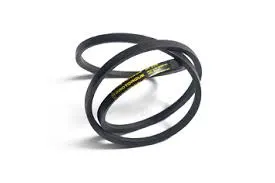- Arabic
- French
- Russian
- Spanish
- Portuguese
- Turkish
- Armenian
- English
- Albanian
- Amharic
- Azerbaijani
- Basque
- Belarusian
- Bengali
- Bosnian
- Bulgarian
- Catalan
- Cebuano
- Corsican
- Croatian
- Czech
- Danish
- Dutch
- Afrikaans
- Esperanto
- Estonian
- Finnish
- Frisian
- Galician
- Georgian
- German
- Greek
- Gujarati
- Haitian Creole
- hausa
- hawaiian
- Hebrew
- Hindi
- Miao
- Hungarian
- Icelandic
- igbo
- Indonesian
- irish
- Italian
- Japanese
- Javanese
- Kannada
- kazakh
- Khmer
- Rwandese
- Korean
- Kurdish
- Kyrgyz
- Lao
- Latin
- Latvian
- Lithuanian
- Luxembourgish
- Macedonian
- Malgashi
- Malay
- Malayalam
- Maltese
- Maori
- Marathi
- Mongolian
- Myanmar
- Nepali
- Norwegian
- Norwegian
- Occitan
- Pashto
- Persian
- Polish
- Punjabi
- Romanian
- Samoan
- Scottish Gaelic
- Serbian
- Sesotho
- Shona
- Sindhi
- Sinhala
- Slovak
- Slovenian
- Somali
- Sundanese
- Swahili
- Swedish
- Tagalog
- Tajik
- Tamil
- Tatar
- Telugu
- Thai
- Turkmen
- Ukrainian
- Urdu
- Uighur
- Uzbek
- Vietnamese
- Welsh
- Bantu
- Yiddish
- Yoruba
- Zulu
Жел . 09, 2024 20:36 Back to list
Understanding 7pk Belt Sizes and Their Applications in Various Machines
Understanding 7pk Belt Sizes A Comprehensive Guide
When it comes to automotive maintenance, ensuring that your vehicle runs smoothly often hinges on the condition of its belts. One of the most critical types of belts is the 7pk belt, which plays a significant role in the operation of various engine components. Understanding 7pk belt sizes is essential for mechanics, DIY enthusiasts, and anyone looking to maintain their vehicle's performance.
What is a 7pk Belt?
The term 7pk refers to the specification of a serpentine belt. The 7 denotes the number of ribs or grooves that the belt has, while pk indicates that it is a type of poly-V belt, which features multiple ribs running along its length. These ribs enhance grip and allow the belt to transmit power effectively across various pulleys in an engine. The poly-V design aids in reducing friction, which in turn improves fuel efficiency and engine performance.
Applications of 7pk Belts
7pk belts are commonly found in various vehicles, including cars, trucks, and SUVs. They typically drive essential components such as the alternator, power steering pump, water pump, and air conditioning compressor. Given their importance in ensuring that these systems operate properly, a malfunctioning 7pk belt can lead to a cascade of issues, including overheating, battery failure, and compromised steering control.
How to Measure 7pk Belt Sizes
To ensure compatibility with your vehicle, it is crucial to measure the belt size accurately. A 7pk belt size is typically denoted by its length and width. The length is measured in millimeters, while the width corresponds to the rib count. For a standard 7pk belt, the length usually ranges from around 1000 mm to 2000 mm, but this can vary based on the vehicle's specific requirements.
To measure your existing belt, follow these steps
7pk belt sizes

1. Remove the Belt First, ensure that the engine is off and safely cool. Then, take off the belt from the pulleys following the manufacturer's guidelines. 2. Measure Length Use a tape measure or a ruler to measure the length of the belt from one end to the other.
3. Count the Ribs Ensure you count the ribs accurately to confirm that it is indeed a 7pk belt.
4. Check for Wear While you have the belt off, inspect it for signs of wear such as cracks, fraying, or glazing. It's crucial to replace a worn belt to avoid damaging other engine components.
Choosing the Right 7pk Belt
When it comes time to replace your 7pk belt, choosing the right one is vital. Look for belts from reputable manufacturers to ensure quality and durability. Check compatibility with your vehicle model by consulting the owner's manual or using a reliable online database.
Additionally, consider the environmental conditions in which your vehicle operates. For example, if you frequently drive in extreme temperatures or dusty environments, it may be worth investing in a high-performance 7pk belt designed for enhanced durability.
Conclusion
In summary, understanding 7pk belt sizes and their applications is fundamental for vehicle maintenance. Regular inspection of your serpentine belts can help prevent unexpected breakdowns and costly repairs. Remember that a well-functioning 7pk belt will not only keep your engine running smoothly but also contribute to better fuel efficiency and overall vehicle performance. If you're unsure about any aspect of belt replacement, don't hesitate to consult a professional mechanic for guidance. Keeping your vehicle’s belts in optimal condition is one of the simplest yet most effective ways to ensure your vehicle remains reliable on the road.
-
Korean Auto Parts Timing Belt 24312-37500 For Hyundai/Kia
NewsMar.07,2025
-
7PK2300 90916-T2024 RIBBED BELT POLY V BELT PK BELT
NewsMar.07,2025
-
Chinese Auto Belt Factory 310-2M-22 For BMW/Mercedes-Benz
NewsMar.07,2025
-
Chinese Auto Belt Factory 310-2M-22 For BMW/Mercedes-Benz
NewsMar.07,2025
-
90916-02660 PK Belt 6PK1680 For Toyota
NewsMar.07,2025
-
drive belt serpentine belt
NewsMar.07,2025

